Headlines and events archive
Displaying 301 - 350 of 396
You may also find an archive of news published in the media which are related with the Instituto de Astrofísica de Andalucía - CSIC.
Pages
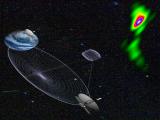
|
26/01/2016
The highest angular resolution image in Astronomy reveals the insides of a galactic nucleus The space mission RadioAstron (Russian Space Agency) has observed, along with fifteen other radio telescopes distributed around the globe, the environment of the black hole at the core of the active galaxy BL Lacertae |
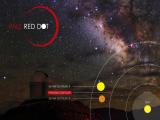
|
15/01/2016
Follow a Live Planet Hunt! A unique outreach campaign has been launched that will allow the general public to follow scientists from around the globe as they search for an Earth-like exoplanet around the closest star to us, Proxima Centauri. The observing campaign will run from January to April 2016 and will be accompanied by blog posts and social media updates. No one knows what the outcome will be. In the months following the observations, the scientists will analyse... |

|
15/01/2016
The European Space Agency (ESA) will search for potentially dangerous objects from Calar Alto ESA and Calar Alto have signed a collaboration agreement for the exclusive remote use of the 80 cm. Schmidt Telescope. |
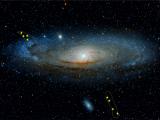
|
11/12/2015
History of Andromeda galaxy studied through stellar remains Planetary nebulae, stars similar to the Sun which have burnt up their fuel and ejected their external layers, make it possible to study two main substructures of the Andromeda galaxy |
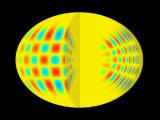
|
30/11/2015
Researchers from the IAA and the UGR question results obtained heretofore in the study of pulsating stars A study using the high precision satellites CoRot and Kepler has pointed to two examples which put in question the use of a tool common to most studies of stellar oscillations |

|
08/10/2015
The Institute of Astrophysics of Andalusia receives the medal of honor of the Foundation Rodríguez-Acosta The medal has been awarded for his research and as a center of international reference |

|
18/10/2015
Infrared ‘eye’ arrival completes CARMENES instrument, which will see its first light in November The infrared channel, developed at the Instituto de Astronfísica de Andalucía (IAA-CSIC), will be tomorrow placed in its final location, at the 3.5m Calar Alto Observatory telescope |
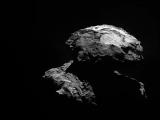
|
27/09/2015
Rosetta mission confirms comet 67P to be product of fusion of two independent objects Cometary lobes collided together very slowly during formation of the Solar System |
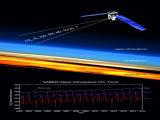
|
15/09/2015
Concentration of carbon dioxide on the rise in upper layers of Earth’s atmosphere The SABER instrument, aboard the TIMED satellite (NASA), has measured an increase of between five and twelve percent per decade in the concentration of CO2 in the top atmospheric layers |
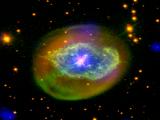
|
27/07/2015
Abell 78: the born-again star Abell 78 suffered a late thermonuclear blast that took it back for a while to a previous stage |
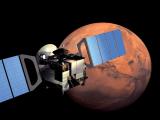
|
09/07/2015
UPWARDS, a cutting-edge project for global understanding of Mars Co-ordinated by the Instituto de Astrofísica de Andalucía (IAA-CSIC), the project involves seven European scientific institutions which are developing new analytical techniques to exploit the Mars Express and the future ExoMars missions |
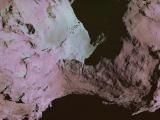
|
01/07/2015
Activity inside pits of comet 67P observed by the Rosetta mission helps to explain their origin Origin of circular depressions found on various comets has finally been discovered thanks to the observations of the OSIRIS camera aboard the Rosetta mission (ESA) |
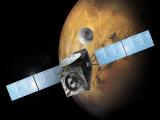
|
13/05/2015
IAA codirects NOMAD, an instrument that may solve the enigma of methane on Mars In eight months’ time, an instrument called NOMAD will fly to Mars aboard the ExoMars mission of the European Spatial Agency (ESA) |
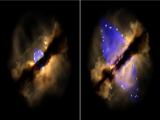
|
30/03/2015
Emergence of a stellar jet observed in real time The observation over an eighteen year span of the formation of a massive star has unveiled the birth of a bipolar jet which ejects matter and regulates the star’s growth |

|
25/03/2015
Real time gestation of stellar jet Stars birth and grow inside big clouds made of gas and dust by gravitational collapse of overdensity areas. |

|
23/03/2015
IZw18: the galaxy that reveals the history of the universe A map of ionized helium in the galaxy has just been published which indicates the presence of peculiar stars similar to the first that ever shone in the universe |
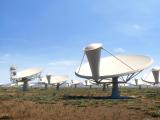
|
09/03/2015
The world’s largest radio telescope takes a major step towards construction The Square Kilometre Array (SKA), the largest research infrastructure ever developed, has already a final design for the first phase of the project |

|
24/02/2015
The huge “Y” in the atmosphere of Venus due to a wave distorted by the wind When observed in the ultraviolet range, Venus’ atmosphere reveals to be covered by a dark Y-shaped cloud whose origin and evolution have remained unexplained up to date |
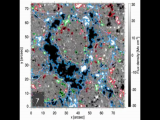
|
19/02/2015
The origin of the magnetic field covering the Sun has been discovered High resolution observations using the HINODE satellite reveal the existence of small magnetic elements inside solar supergranules |
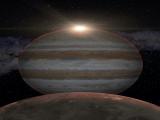
|
18/02/2015
JUPITER, a laboratory for studying exoplanets Its atmosphere has been analized during an eclipse of Ganymede, the third satellite of the gas giant |
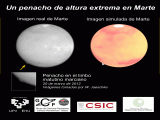
|
16/02/2015
The highest plume ever observed on Mars Researchers are studying images of a mysterious bulge that rose up more than 200 km from the surface |

|
16/02/2015
Stars akin to the sun also explode when they die IRAS 15103-5754, a star observed as it was turning into a planetary nebula, yields new clues as to the death of stars akin to the sun |

|
27/01/2015
The characteristics of the multiple star "sigma Orionis" are determined A detailed study on the multiple star system led by Spanish astrophysicists has identified the period, mass and emission of high energy photons of the main stars of the system |
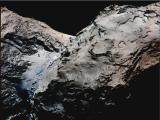
|
22/01/2015
Rosetta mission yields most accurate and integral picture of a comet ever Science magazine publishes special edition on findings of Rosetta, on orbit around comet 67P Churyumov-Gerasimenko since August 2014 |
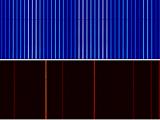
|
10/12/2014
A universal comb Optical frequency comb allows more accurate astronomical observations |
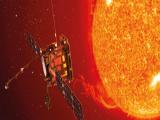
|
11/11/2014
IAA-CSIC is co-managing an instrument that will orbit around the Sun on board the Solar Orbiter mission (ESA) Solar Orbiter (ESA) will travel around the Sun to study both solar physics and the Sun’s influence on the interplanetary medium, using instruments of local measurement as well as remote surveyal |
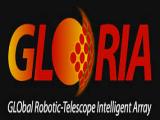
|
10/11/2014
The GLORIA Project makes available to internet users 13 robotic telescopes in three continents GLORIA, which uses copyleft licenses for the free distribution of its contents and materials, is supported by the Ciziten Science program of the European Union |
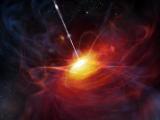
|
29/10/2014
Existence of a group of “quiet” quasars confirmed Apart from very distant, ultraluminous quasars -evolving rapidly and associated with galaxy mergers - there is likely another population of quasars that evolves slowly |
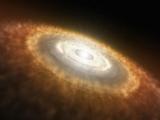
|
23/09/2014
Signs of the formation of a planetary system around the star HD169142 Young star HD169142 displays a disk of gas and dust with two annular gaps possibly due to the formation of planets |
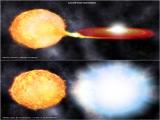
|
20/08/2014
Type Ia supernovae stem from the explosion of white dwarfs coupled with twin stars Study discards possibility that type Ia supernovae might stem from explosions of white dwarfs nourished by normal stars. Were these conclusions to become generalized, type Ia supernovae might no longer serve as “standard candles” to measure astronomical distances |
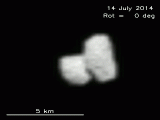
|
17/07/2014
The unexpected shape of the nucleus of the comet 67P Comet 67P/Churyumov-Gerasimenko, destination of ESA’s Rosetta mission, seems to consist of two parts |
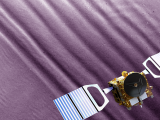
|
09/07/2014
The atmospheric waves of Venus, key to understanding the superrotation of its atmosphere, have been deciphered Venus’ atmosphere rotates up to sixty times faster than its surface, a phenomenon known as superrotation whose origin hast yet to be satisfactorily explained |
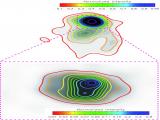
|
03/07/2014
Researchers from the IAA win the "Beauty Contest", an international competition to obtain optical/infrarred interferometric images Imaging at optical/infrared wavelengths is a novel technique that has been developed during the last ten years |
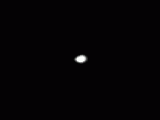
|
03/07/2014
Rosetta’s comet takes shape In current images obtained by OSIRIS, Rosetta’s scientific imaging system, the nucleus of 67P/Churyumov-Gerasimenko covers good four pixels |

|
02/07/2014
IMaX, a Spanish instrument, reveals how magnetic structures in the Sun are born and evolve IMaX, aboard the SUNRISE mission –a telescope that observed the sun from a stratospheric balloon over the Arctic- has observed the formation and evolution of a magnetic flux tube on the solar surface |

|
04/06/2014
Ancient worlds around a "foreign" star Two planets have been discovered around Kapteyn´s, a star that was possibly part of a satellite galaxy absorbed by the Milky Way |
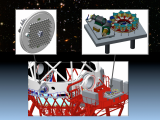
|
21/05/2014
The contract for the construction of MEGARA, the next optical instrument for the Gran Telescopio Canarias, is signed MEGARA is the first spectrograph capable of observing the emission of the gas located in between distant galaxies |
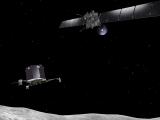
|
15/05/2014
Rosetta's target comet is becoming active The scientific imaging system OSIRIS on board ESA’s Rosetta spacecraft witnesses the awakening of the mission’s target comet |
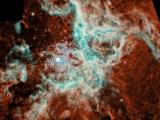
|
15/04/2014
The laws that determine how dust affects the light that reaches us from the stars are being rewritten Laws used since 1989 to correct this effect prompted errors in the characterization of stars and needed revision |
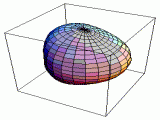
|
01/04/2014
Star-quakes reveal content of stars which are hotter and more massive than the sun The propagation of sound waves inside stars produces oscillations on their surface. The analysis of these oscillations makes it possible to know the internal structure and age of stars, and it has just turned out to be also effective in the detailed study of stars more massive than the sun |
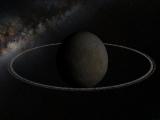
|
26/03/2014
A system of rings around a body of the Solar System which is not a planet has been spotted for the first time Chariklo, an object 250 kilometers in diameter has two rings around it possibly composed of water ice. The finding, involving researchers from the Institute of Astrophysics of Andalusia (IAA-CSIC), was made possible by a stellar occultation |
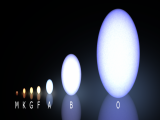
|
06/03/2014
GOSSS survey clears the way for study of massive stars The GOSSS survey was designed to fill the gaps and overcome the heterogeneity of previous surveys which led to systematic errors in the classification of stars |
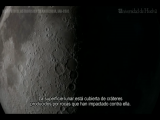
|
24/02/2014
The greatest impact of a rock against the moon has been observed The impact was observed by researchers from the University of Huelva and the Institute of Astrophysics of Andalusia (IAA-CSIC) and produced a glow brighter than the North Star |
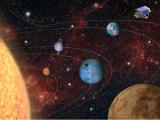
|
20/02/2014
Searching for New Worlds with PLATO Space eye with 34 telescopes will investigate one million stars Spain participaes actively in the mission |
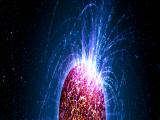
|
11/02/2014
Stars carry "memories" from their early life into in their final stages [UPDATE] It has been discovered that characteristics present at the start of a star’s life disappear during their adult life and re-emerge during their neutron star or white dwarf phases |
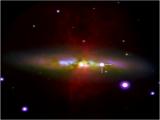
|
30/01/2014
A type Ia supernova, the closest to Earth since 1604, has been observed SN 2014J, discovered in galaxy M82, has mobilized experts from around the world. Pictures of the supernova were taken at the Estallidos Project site, coordinated by IAA, using the William Herschel telescope |
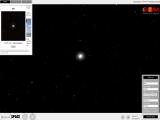
|
22/01/2014
The GLORIA Project launches ‘Personal Space’ - A free web-based tool to explore the Cosmos from your laptop The ‘Personal Space’ web application allows you to make a direct and personal connection to the universe by linking significant events in your own life with what was above you in the sky at that moment |
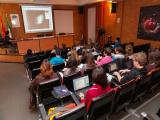
|
07/01/2014
The Institute of Astrophysics of Andalusia (IAA-CSIC) will participate in the fourth year of the Project to Introduce Research and Innovation into Secondary Schools in Granada (PIIISA 2014) The fourth year of this initiative, launched by IAA-CSIC and aimed at introducing secondary school students to the scientific method, begins tomorrow |
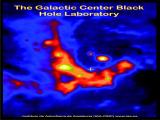
|
18/11/2013
Black hole in centre of Milky Way serves as experimental laboratory Experts from around the world are meeting this week at the Institute of Astrophysics of Andalusia (IAA-CSIC) to discuss the progress made on the study of the centre of our galaxy |
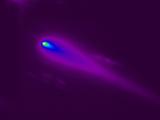
|
14/11/2013
ISON comet undergoes activity burst and it is visible with naked eye ISON will brush past the sun on 28 November next and will provide an outstanding opportunity to study the evolution of a new comet, recently arrived from the boundaries of the solar system |